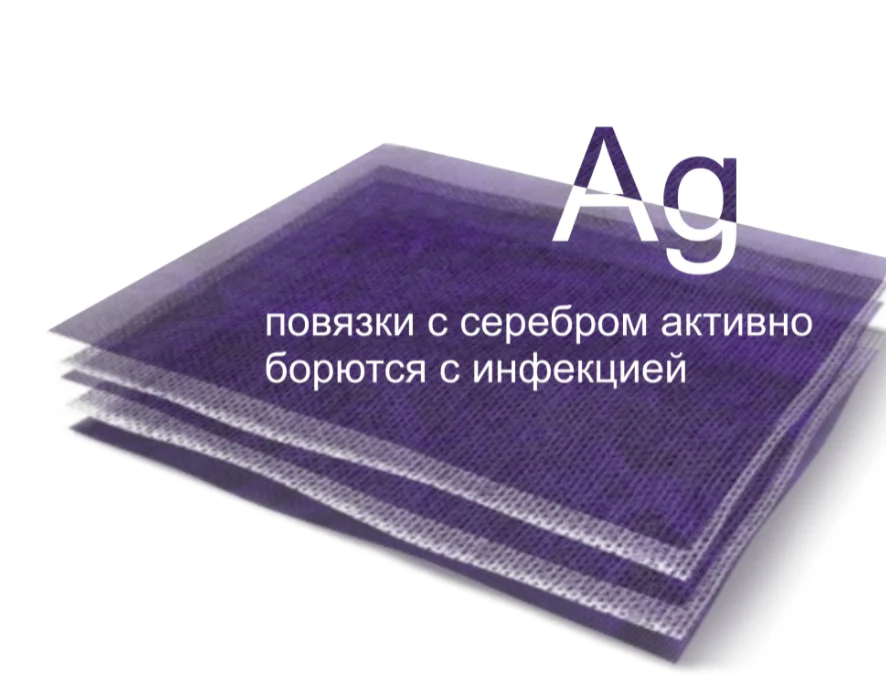Silver has been used as a topical antimicrobial in wound healing for hundreds of years. It is used in solid elemental form to prevent or treat infections (eg, silver wire inserted into wounds), in the form of silver salts in a wound disinfectant solution (eg, silver nitrate solution), and more recently in ointment form. You can buy it here.

In recent years, a wide range of advanced wound dressings with elemental silver or silver-releasing compounds have been developed (eg, Acticoat, Melgisorb Ag, Actisorb Silver, Vliwaktiv Ag, Biatain Ag, Aquacel Ag, etc.).
Silver is found in various forms of dressings:
- as elemental silver - e.g. metallic silver, nanocrystalline silver
- as an inorganic compound - e.g. silver oxide, silver phosphate, silver chloride, silver sulfate, sodium phosphate compounds, silver compounds, calcium compounds, silver zirconium compounds, SSD
- in the form of an organic complex - for example, silver-zinc allantoinate, silver alginate, silver and carboxymethylcellulose
- as an inorganic compound - e.g. silver oxide, silver phosphate, silver chloride, silver sulfate, sodium phosphate compounds, silver compounds, calcium compounds, silver zirconium compounds, SSD
Silver contained in the bandage can be in the form of:
- coating layer - on one or both outer surfaces of the dressing (elemental silver or nanocrystalline)
- within the dressing structure - in the form of a coating of dressing materials (elemental silver or its compounds), in the spaces between dressing materials (elemental silver or compounds) or in the form of a compound assimilated to the dressing structure.
Silver, located on the outer surface of the dressing, comes into contact with the wound, exerting an antimicrobial effect on it. The silver contained in the structure of the dressing acts on bacteria absorbed into the dressing through the exudate, but in some cases it can partially spread inside the wound.
How does silver work?
Silver in metallic (elemental) form does not react or kill bacteria. For silver to become germicidal, its atoms must lose an electron and become positively charged ions (Ag+). Florence NightingaleAlthough elemental silver ionizes in air, its ionization is facilitated by exposure to an aqueous environment such as exudates from wounds. Silver ions are highly reactive and act on different parts of bacterial cells, ultimately causing cell death.
Silver ions transported into the cell inhibit cell function by binding to proteins and interfering with energy production, enzymatic function, and cell replication. Silver ions act against a wide range of bacteria, fungi and viruses, including many antibiotic-resistant bacteria.



